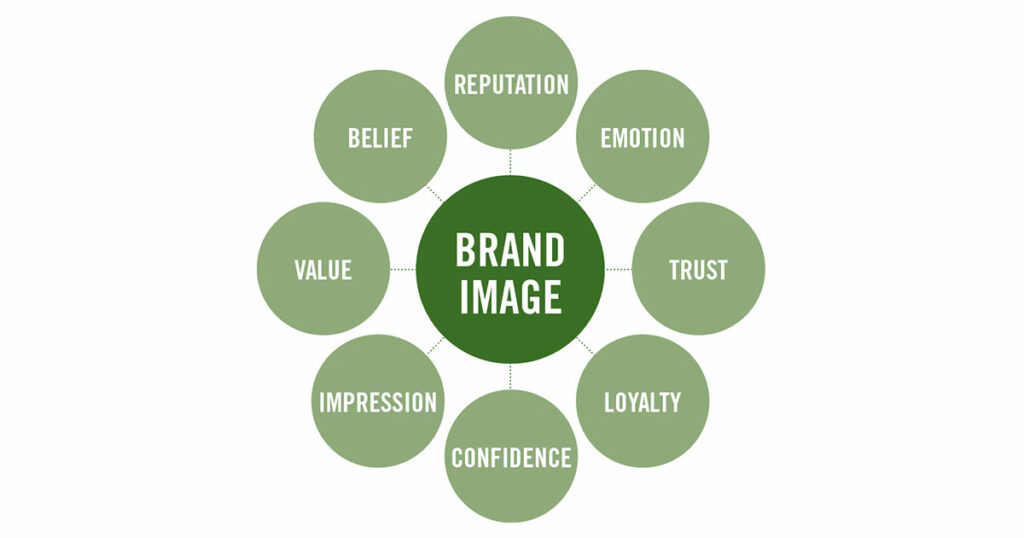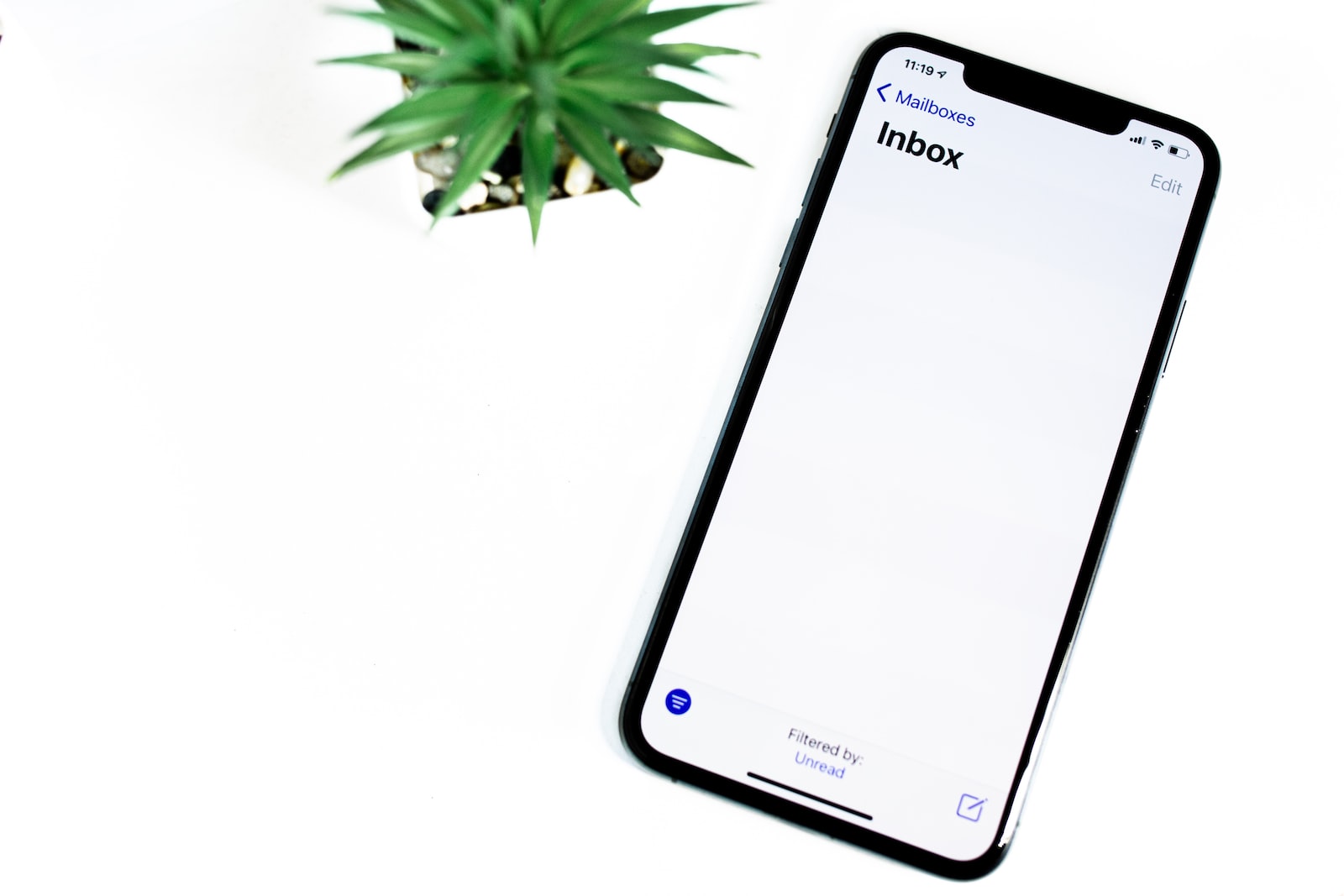This article explores brand image and its importance, including strategies and successful examples. Let’s start building your brand!
Defined simply, brand image is what a customer thinks of your brand. It’s the perception of your brand in the minds of the consumers.
“An image is the set of beliefs, ideas, and impressions that a person holds regarding an object”
– Philip Kotler – Marketing Guru
What Is A Brand Image?
Understanding a brand’s essence is vital to creating its image. The customer’s interaction and experience shape this image, which goes beyond just a logo or color. Design, content, and brand behavior all play a role.
Brand image is exemplified by TV and social media video ads that quickly convey the company or product. If you encounter an unfamiliar brand, you may visit their website or Facebook page after seeing an ad in a magazine.
You find people on Google, connect on platforms, form a positive opinion. When you contact a polite woman, she promptly provides information, strengthening your perception. You talk about the brand with friends.
A brand image is the collective messaging based on a strategy. The messages and content are synchronized to create a unified and impressive brand image across platforms and channels.
The perception of brand image is fragile.
A single mistake can damage the brand’s reputation, especially in the beginning. Take, for instance, the premium brand. We admired their magazine Ad and website, but their Facebook page was disappointing.
The first question mark:
You Google them and see a 3-star review. Poor social proof. Their image is crumbling. They need a branding company to repair their perception and construct the right brand image.
For the longest time, children in India would associate chocolate with just Cadbury’s. In fact, Cadbury’s became a synonym for chocolate. One doesn’t need to be a big multinational company such as Apple, Nike, or Cadbury’s.
A brand image will help you stand out among your competitors:
Mr. Wonderful’s success story exemplifies the power of creativity. This Spanish brand sells a variety of items like notebooks, keychains, mugs, and umbrellas, all adorned with positive messages. These messages define the brand’s unique identity.
They are 100% recognizable wherever you are! Yes, they have thousands of impostors and initiators out there, but their creativity is completely original. Hence, the popularity of their bran image.
Brand Identity Vs. Brand Image
Brand identity and brand image are often confused, but they have distinct differences. Brand identity is how a company is seen and how it presents itself to customers. It reflects the company’s:
- Brand Values
- Brand Personality
- Ideas of the company
- Attributes
- Quality
- Performance
- Services
- Support facilities
Key Differences: Brand Identity And Brand Image
Brand identity includes the brand’s entirety and its positive image for consumers. It represents the overall impression of the product or service.
Brand identity involves active company participation, covering elements such as logo, name, design, and color. Brand image, a passive approach, includes brand association and similar visual elements.
A brand’s identity represents its core values, mission, and vision. It reflects how consumers perceive the brand based on their interactions and experiences.
In brand identity, one looks back with the thought of improving consumer experiences. On the contrary, brand image focuses on moving forward with positive customer experiences.
Why Does Brand Image Matter?


Why do we start a business? To earn profits, build a reputation in the market, and enhance the consumer experience, right? However, many business owners feel brand image comes with unnecessary fluff. They feel it adds no value to their current service or product!
And they are so wrong! These business owners focus so much on offering that they forget about the brand image. This leads to growth stagnation and affects market sales. Big brands like Apple, Nike, Reliance, etc. prioritize both.
We hear you — “I am not such a big brand” or “We are just an SME.”
But to have a strong brand image is to come up with something that your customers will remember your brand by! So, let’s take a look at why brand image matters.
Brand Image Helps Make An Impression
First impressions matter in business. The way employees dress and the appearance of your store or website contribute to your brand image. A clean store is especially important for retailers.
Presentation is key. Brand image is important in healthcare as it improves patient engagement. A sleek business card for sales reflects your brand’s promise.
To convey subtlety and elegance, choose a matte finish and clear font. For a youthful or startup brand, opt for something colorful or bold. Luxury brands can use opulent designs or rich card material. These details create a lasting impression.
Makes Your Brand Recognizable
Successful brands build strong brand identities through visual elements like logos and packaging. Apple’s MacBook and iPhone are recognized by their logo, while Coca-Cola stands out with its red can and unique font. However, visual elements alone are not enough; a brand’s identity is shaped by more than just a logo or slogan.
A brand’s image is vital for success. It needs effort to maintain speed, reliability, and quality. In a competitive environment, each consumer interaction counts. Building client relationships reflects your company’s culture and values. Nurturing customer relationships shows you care.
Brand Image Reflects How Your Company’s Placed
Think about this — a restaurant where waiters don’t have a uniform or dress code. Everyone is wearing whatever they wish. Ugh… chaos. You don’t know who’s a customer and who’s the server right?
A polished brand stands out from a new one. Your brand’s image should convey uniformity, consistency, and professionalism. If consumers sense a lack of these qualities, your brand’s image suffers.
For example, does your website have your email address? Are the links and tabs working? A simple thing like the wrong email address shows that you have a poor professional image.
Builds Credibility And Equity
Brand image is vital for credibility and loyalty. Subway offers healthy fast food, while Taco Bell provides vegan, vegetarian, healthy, and non-veg options. These promises are upheld and reinforce the brand’s values.
, it is crucial to focus on communicating your core values and culture code as part of your marketing strategy. This will not only help establish your brand’s position in the market but also enhance its credibility.
The digital era has made brand image more prominent, including in the healthcare industry. Online platforms like social media and consumer forums have become crucial for discussing brand experiences.
Whatever you do and wherever you do, it will shape your brand image. So If you thought that brand image doesn’t matter – think again!
Creates Brand Personality
Brand personality is perceived the same way you think of a person. Be it your customers, employees, or even associates — all company interactions are personal ones. It’s person-to-person at some point! Let’s take a look at some examples:
- Apple – The tech giant successfully generates revenues and brand ranking.
- Colgate – A brand name that is that has associated itself with belief and trust.
- Then there are Patagonia and The North Face. Companies that are known for the outdoor savvy and rugged customers. But there is a difference between brand personality and brand image.
Brand personality is a part of the brand image. While image adheres to the customer viewpoint, brand personality is a set of human characteristics associated with a brand.
How Does Brand Image Impact Your Business?
90% of purchase decisions rely on brand image. Customers associate this image with brand reputation, including prestige, goodwill, and quality. These intangible qualities influence decision-making.
You don’t have full control over how customers perceive your brand. It varies from person to person. Hence, when you are working on your business’s brand image, a lot of effort goes in.
Brand image is a significant contributor to the success of your business because:
- It’ simpler and quick to introduce new products/services with the same brand name
- A positive brand image attracts new customers & helps retain the older ones
- Fosters healthier business-customer relationship
- Increases trust level of existing customers
- Maximizes customer retention
How Can You Build Or Create A Brand Image?
In today’s cutthroat business world, brand image is everything in today’s cutthroat business environment. No matter what your industry, you need a rock-solid brand to stand!
If not, customers lose attention & competitors reap the advantage. There’s no one-way ticket to building a positive brand image. If you want to nurture a compelling brand image, you have to take a multidisciplinary approach.
This approach should combine a coordinated digital ecosystem constructed, social media strategy, etc. They say, “Building a brand image for a business takes more time than building a personal brand image.” Here’s what you can do:
Identify Your Audience
To build a strong brand, first identify your target audience. This includes both external and internal groups, spanning demographics and regions. Knowing your audience is crucial for creating an effective marketing strategy that meets their needs.
Research Competitor Brands
Research competitors in your industry. Don’t blindly copy bigger brands. Make your brand unique. Remember, differentiation is crucial. Study benchmark brands for business style and pricing.
Set Business Goals
To find your niche audience, set goals. Don’t create a brand image without knowing your short and long-term business goals, as it wastes resources.
Brand Image Golden Circle
This was developed by the leadership expert Simon Sinek. In simple words, the Golden Circle concept helps identify the purpose behind anything in business. This is how you can get into the core of the circle:
- What – This includes the products or services you offer
- How – What differentiates you from the competition
- Why – The very reason you are in a particular business & your passion
It’s a great way to identify your unique brand purpose.
Define The Persona Of Your Brand
Now, create your brand persona. It should attract customers and convey your unique qualities and product advantages, giving you a competitive advantage. Keep it concise and focused. Ask yourself:
- Why do you exist?
- What differentiates you?
- What problem do you solve?
- Why should people care?
Evaluate these factors to identify your potential customers:
- Age
- Gender
- Location
- Income
- Education Level
- Motivations
- Goals
- Pain points
- Influencers
- Brand affinities
- Work on your brand logo
The brand logo is imperative to building your brand image. It can impress minds and shift cold leads or viewers to potential customers. With a lousy logo, your not-so-remarkable impression can result in the loss of customers.


Recognizing the logo is unnecessary. Nike’s Swoosh symbol and fitting tagline embody the brand’s social values and product. In essence, a well-designed logo can provide a strong foundation for brand development.
Develop A Key Message
Capture your main messages and tailor them to your audiences. This is crucial for crafting a strong brand image. Highlight your business’s unique features to attract customers with added value.
For this, you need to have a USP. What’s your unique selling point? Once you identify the same, broadcast it to your target segment using an impactful key message.
Domino’s Pizza: “You get fresh, hot pizza delivered to your door in 30 minutes or less or it’s free.”
This key message encompasses everything that the brand stands for. And you know how it worked for them! In short, it outlines the key qualities & benefits your brand offers.
Set-Up A Brand Mission Statement
Every brand needs a mission statement that defines its purpose. It should reflect the brand’s logo, tagline, message, and personality.
Nike uses diverse athletes to inspire and believes that everyone is an athlete, regardless of their background or body type. Their mission is reflected in their tagline and social media content.
Consolidate Your Brand Image
The steps above create a solid brand image. Now, focus on promoting the brand to drive growth and revenue. Here are some helpful activities:
- Public Relations: PR or public relations will circulates your key message. It involves promoting online blogs, trade publications, etc. to promote brand image and raise awareness.
- Content: For any company, content is the fuel that drives brand image. Ensure that you update informative content to suit target audience segments.
- Social media: This is a valuable tool to share and educate your audience. It will enable you to interact with customers and influencers in the relevant industry. It can increase website traffic and boosts brand image.
- Search Engine Optimization (SEO): With the right SEO techniques, your brand can rank on top pages of search engines like Google. This will help make a big impact.
What Is An Effective Brand Image Example?
Many brands strive for a strong image and invest heavily in achieving it. Here are some successful brands that stood out from the rest.


Coca-Cola
Iconic 130-year-old brand! Started in 1886, brand image and identity have evolved. They consistently recreate success. Signature red and white colors, recognizable typeface.
Here is what they’ve done over the years
- 1971 it was the Hilltop singers performing “I’d Like to Buy a World a Coke.”
- In 1979 it was “Have a Coke and a Smile.”
- The 1980s were all about “Can’t Beat the Feeling.”
- In 1993, they came up with the “Always Coca-Cola” tagline, which included a polar bear cover
- In 1995, Coca-Cola introduced the concept — “Holidays are Coming.” Overnight, they became a festive brand associated with holidays.
What are the main takeaways from Coke?
They focused on consistency
Coca-Cola attempted a creative marketing campaign but maintained their brand’s essence and left a lasting impression on customers.
- Scripted font for its logo
- Tell-tale red
- Marketing links back to joy & happiness
- Coke brand image building
They evolved with time
Coca-Cola’s attempt to revamp their brand with “New Coke” in 1985 backfired as fans strongly opposed the change, despite prior testing.
Tip: Don’t make one without careful thought and consideration.
Acknowledged the power of branding
Is your business the most important asset? No item or service can sell without a strong brand image. Coca-Cola prioritized building a brand image centered around lifestyle, community, happiness, and love. They sold an idea and an experience rather than focusing on taste or deliciousness.
Being relevant
Coke is built around positive ideas. However, it has modernized itself. They’ve successfully kept their fingers on the pulse of their target market. As a result, they have created brand affinity.
Tip: Always listen to your audience.
At the end of the day, many brands exist, some more successful than others. The Coke case study shows how this brand thrived in a competitive market, maintaining a large consumer presence.
Conclusion
Your brand is a unique set of associations in the minds of your customers. Create a consistent brand image that represents your beliefs and goals. Use digital mediums to gain multiple benefits from branding.



















